It’s time for ‘Japan by Prefecture‘ again! This is the series that aims to provide the highlights of each prefecture of Japan, along with my personal favourites and suggestions from readers. This week, we’re looking at Kyoto (京都府).
Kyoto Prefecture is part of the Kansai Region (関西地方) and the capital is, of course, Kyoto (京都市). A big thank you to Zooming Japan, Sengoku Sophie, and Japan Australia for contributing ideas to this week’s post. As with when I wrote about Tokyo, I’ve decided to focus this week on things worth seeing around Kyoto Prefecture rather than the obvious and incredibly famous sights in Kyoto City itself. Everyone knows Kyoto – it’s full of temples and shrines, such as the Golden Pavilion (Kinkakuji /金閣寺) and Kiyomizu-dera (清水寺) – and whilst these are fantastic places to visit, let’s see what else is on offer.
Arashiyama (嵐山), whilst being not far from central Kyoto on the Western outskirts of the city, is a world away. I’ll tell you a secret – the very first time I visited Kyoto back in 2006 I was a little disappointed. I arrived expecting olde-worlde Japan and instead found a massive, modern station, concrete buildings and pachinko parlours. However, the first time I visited Arashiyama I found the Kyoto I was in fact looking for!
Rickshaws passed by, buildings were old and wooden looking (if not actually wooden), and everything seemed to have a hint of green tea about it. Arashiyama is one of my favourite places in all of Japan actually, and I don’t think I could ever tire of it. The bamboo groves alone are enough to keep me coming back.
One of Arashiyama’s main attractions is the Togetsukyo Bridge (渡月橋) (meaning ‘Moon Crossing Bridge’), which also acts as a useful central landmark. The bridge, originally built during the Heian Period (794 – 1185) crosses over the Hozu River and Katsura River (the name of the river actually changes either side of the bridge).
There are lots of temples to visit in the Arashiyama area, and lots of beautiful scenery to see too. This area is particularly popular in spring and autumn, when crowds flock to see the cherry blossom and coloured leaves. Incidentally, the name ‘Arashiyama’ (meaning ‘Storm Mountain’) actually refers to the mountains on the southern bank of the river, whereas Sagano is actually the name of the main area. However, the whole area is commonly known as Arashiyama now.
Uji (宇治), a city in the southern outskirts of the city of Kyoto, is somewhere that is firmly on my list of places to visit. Famous for its tea production, Uji is also the home of Byodoin (平等院) – the temple featured on the back of the 10 yen coin. This temple is an example of Buddhist Pure Land (Jodo) architecture.
There are other temples and shrines of note in the Uji area, but Byodoin is by far the most famous. As I mentioned, Uji is also famous for tea – this is the place to go for decent green tea in Kyoto Prefecture. and an array of green tea sweets and souvenirs are available here too. Naturally, there is even an Uji Matcha Kit Kat available, and it’s really good!
Amanohashidate (天橋立) is one of Japan’s ‘three scenic views’ (日本三景) along with Matsushima (松島) and Itukushima Shrine (厳島神社) or Miyajima (宮島). Having seen the other two, I feel it’s my duty to visit Amanohashidate soon, and I might even include it on my itinerary for my trip in November. Amanohashidate is a pine-covered sandbar in northern Kyoto Prefecture, and it is said to look like a pathway between heaven and earth.
There are a number of places from which to view Amanohashidate, with Amanohashidate View Land being one of them and Kasamatsu Park being another. At Kasamatsu Park an odd way of viewing the sandbar became a tradition known as ‘matanozoki’. Visitors are supposed to stand with their back to the sandbar and bed over to view it from between their legs! This way of viewing the sandbar has become something of a tradition over the years – I guess I’ll have to try it for myself!
(Image source: JapanGuide.com)
Miyama (美山) is a remote and rural area in northern Kyoto Prefecture, famous for its traditional thatched roof (‘kayabuki’) farmhouses. People still live and work in these farmhouses, making this a part of Japan with a very authentic and traditional feeling. The main attraction here is the village called Kabayuki no Sato, which features around 40 farmhouses. Visitors are welcome here, but the majority of houses are private dwellings and cannot be entered. There is a museum though, which is a former residence exhibiting traditional tools and household items from the past. Also in the town is an indigo dyeing studio and gallery called the Little Indigo Museum.
Although most buildings are not open for visitors to poke around in, it is possible to arrange an overnight stay in one of these houses, which is by far the best and most authentic way to get a feel for the village and its history. This is something I would absolutely love to do one day!
The places mentioned above are just a few of the reasons why Kyoto Prefecture is probably one of the greatest prefectures in Japan, and that’s without even mentioning all the fantastic stuff in Kyoto City itself. Kyoto is Japan’s cultural capital, featuring some of the most important temples and shrines, a castle, lots of gorgeous traditional architecture, and of course geisha and maiko (known as ‘geiko’ in Kyoto). No trip to Japan would be complete without a visit to Kyoto!
The Omiyage Section
There are so many famous souvenirs (or ‘omiyage’ / おみやげ) from Kyoto Prefecture, and most of them centre around green tea or ‘matcha’. As I mentioned above, there is an Uji Matcha Kit Kat, and there are also Houji-cha (roasted tea) and Yatsuhashi Kit Kats! Yatsuhashi is one of the best things ever invented. It is a sweet snack, and it comes in both a soft form and a baked form. I like the soft one best, but the hard, baked one used in the Kit Kats is amazing too! It has a cinnamon flavour, and tastes a bit like chai latte. The soft one is like a floppy triangle of dough with a sweet filling of red beans or sometimes chocolate or cream, whereas the hard one is a cutter shaped biscuit with a real snap to it.
(Image sources: 1, & own images)
☆★☆
Next week I will be writing about Osaka (大阪府). Have you been there? What’s good to eat there and what omiyage should I buy? What are the best sightseeing spots or hidden gems? Please do share your thoughts below, and join me next week for Japan by Prefecture!

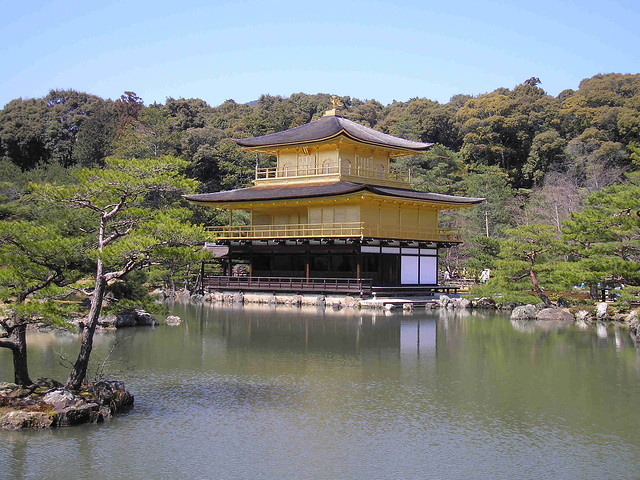
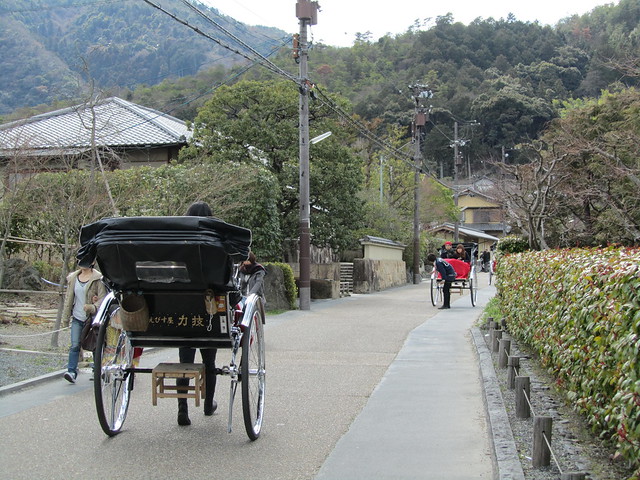
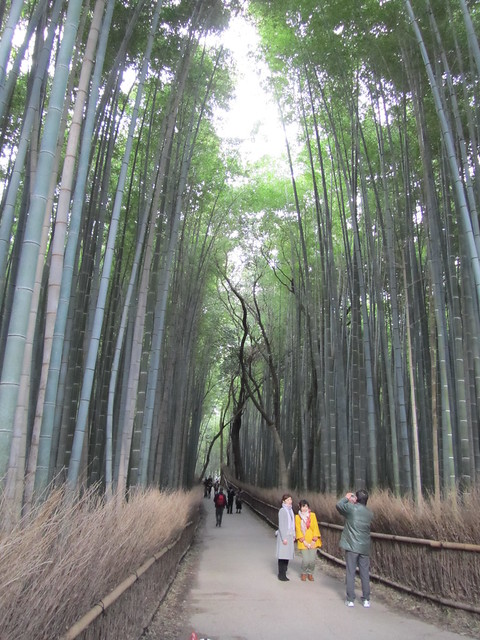
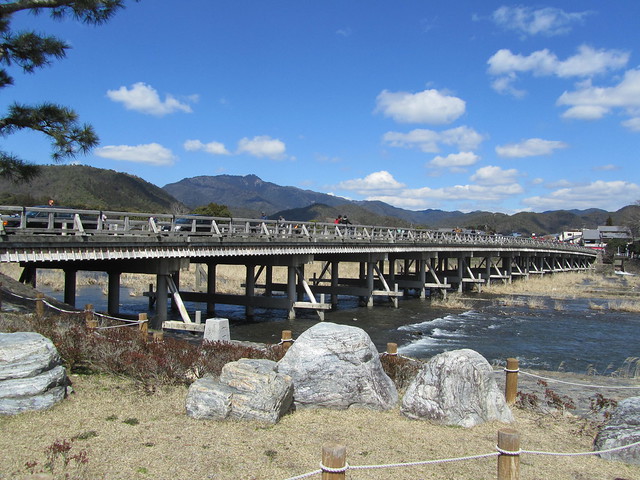





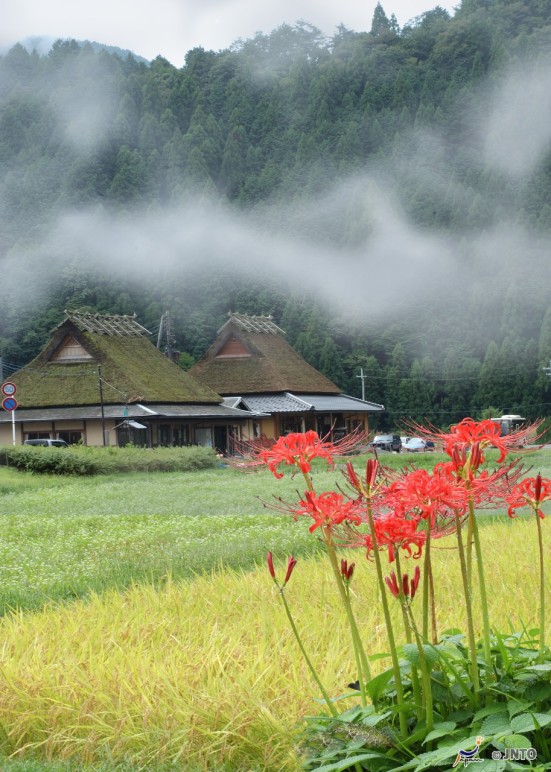

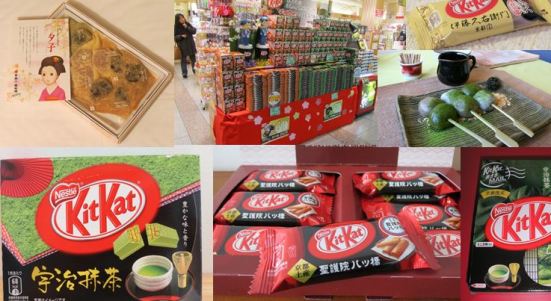
Kyoto is such an amazing place, and I think one visit is not nearly enough! I’d like to venture back someday and visit some of the places mentioned here ^^
As for Osaka, I must recommend Dotonbori. This is the famous nightlife entertainment area in Osaka, with bright neon signs and many stores and tourists. It’s usually very crowded, but it’s famous and I don’t think a trip to Osaka is complete without a stop here. I also recommend eating at the Kani Doraku restaurant, with the giant motorized crab out front. The crab is delicious! And takoyaki (the dough balls with a piece of octopus in the middle) from any vendor is a great Osaka tradition ^^
LikeLike
I agree! one visit to Kyoto is definitely not enough! I’m going again this year and I can’t wait to discover more!
Thanks for the Osaka recommendations! (*^_^)v
LikeLike
I had the same first impression as you. I’ve expected something like Rome, where you can find a monuments from different eras at every corner. Instead found a massive, modern station, concrete buildings and pachinko parlours. 🙂 But similar as you, I’ve later found the charming parts of the city.
LikeLike
I’m glad to hear it wasn’t just me, Urska! I think Kyoto is just one of those places in which you have to look a little harder…
LikeLiked by 1 person
I couldn’t agree more. 🙂
LikeLike
Careful, lassie. You comment that maiko are known as geiko. I believe that the Kyoto ‘arts people’ are known as geiko and their junior maiko.
Anyone who loves – or is about to love – Japan needs a week in Kyoto with its many marvels. Contrary to common thought, it need not be expensive, either for food or rooms. Avoid peak festival times and there are abundant options not far from the central attractions. Learn to use the subway system and find out about day bus passes. Don’t neglect the underground arcades which have plenty of worthy features.
While in Arashiyama, take the climb to the local monkey park for a fascinating experience not readily available elsewhere.
No trip to Kyoto is complete without a visit to Fushimi Inari; it’s scale has to be seen to be believed.
Off the beaten track, not far beyond, is Momoyama-jo, is one of the finest castles, even if you cannot tour inside. The grounds are charming and there is rarely much of a crowd.
The botanical gardens are a delight with a large collection on bonsai.
LikeLike
Thank you for your comments, Rosco, and apologies if I made any mistakes regarding the terminology used for geisha and maiko from Kyoto. I’m no expert on this, I’m afraid!
I agree – Fushimi Inari is definitely worth a visit! 🙂
LikeLike
Osaka is vast and the most western-type city outside of Tokyo.
Dotombori is the only place I have known that has such a “vibe”. Visit during the day but go back at night to experience the switch in energy.
The aquarium near the harbor has the only whale shark on display in the world.
To escape the crowds, pollution and graffiti, take a short train-ride South to Kishiwada-jo with an extraordinary forecourt. It has a good collection of panels and armor inside and a nice garden to its West.
LikeLike
Thanks for the Osaka advice, Alex! (*^_^)v
LikeLike
I’ve visited Osaka quite a lot recently on business and the neon lights and electric atmosphere of Dotonbori always draws me in. Osaka is a really attractive city with traditional buildings mixed in with modern architecture. A few of my favourite places are:
Dotonbori – the liveliest area of Osaka packed with restaurants and amazing night-life.
Osaka Castle – the city’s most popular tourist attraction and a recreation of a 17th century castle.
Umeda Sky Building – a striking futuristic skyscraper which is a highlight of Osaka.
LikeLike
Osaka-jo, being most popular, is crowded on weekends so choose your time. Make sure you see the features in the surrounding grounds.
It’s a pity that the reconstructed castle is spoilt by the highly-visible external elevator.
LikeLike
The surrounding grounds are beautiful, especially during spring and the hanami season. A lot of people like to enjoy hanami on the grounds of the Nishinomaru Garden, where you can enjoy many different varieties of cherry blossoms.
LikeLike
I agree! Despite being a reconstructions Osaka Castle is worth a visit! Thanks for your suggestions, Japan Australia! 😀
LikeLike
http://www.samuelhawley.com/bloodceilingphotos.html Little known but fascinating places to visit are the temples where the blood ceilings can be seen – they are the remains of the wooden floors of Fushimi castle that was laid seige to many many years ago which were then used to help build temples in Kyoto. The samurai who were under siege and were losing committed seppuku (hara kiri). Their blood made imprints on the wooden floors and so the floors were used to make the ceilings so that their spirits could be appeased by being in a temple.
LikeLike
Interesting! Thanks for sharing this, and thanks for stopping by! 🙂
LikeLike
Kyoto is beautiful indeed. And there’s soooooooooo much to see, it’s endless. Of course, I’m talking about the prefecture, not the city alone. ^^
So, next is Osaka?
Hm. Apart from the typical sights within the city, I’d like to recommend Kishiwada Castle and Minoo Park + Katsuoji Temple especially in autumn as the latter two are GREAT koyo viewing spots! ^___^
LikeLike
Thanks for the unusual suggestions, ZoomingJapan! (*^_^)v
LikeLike
What I love about Kyoto (both city and prefecture) is that no matter how many times I’ve been there, I still have a fairly long laundry list of sights left to see! And so much of it is accessible by public transportation, unlike so many of our really unique destinations in Kumamoto.
LikeLike
I couldn’t agree more! Can’t wait to go back and discover some new parts of Kyoto – both prefecture and city! 🙂
LikeLike
I’m becoming obsesses with Kyoto. I have this desire to see it in every season!!
LikeLike